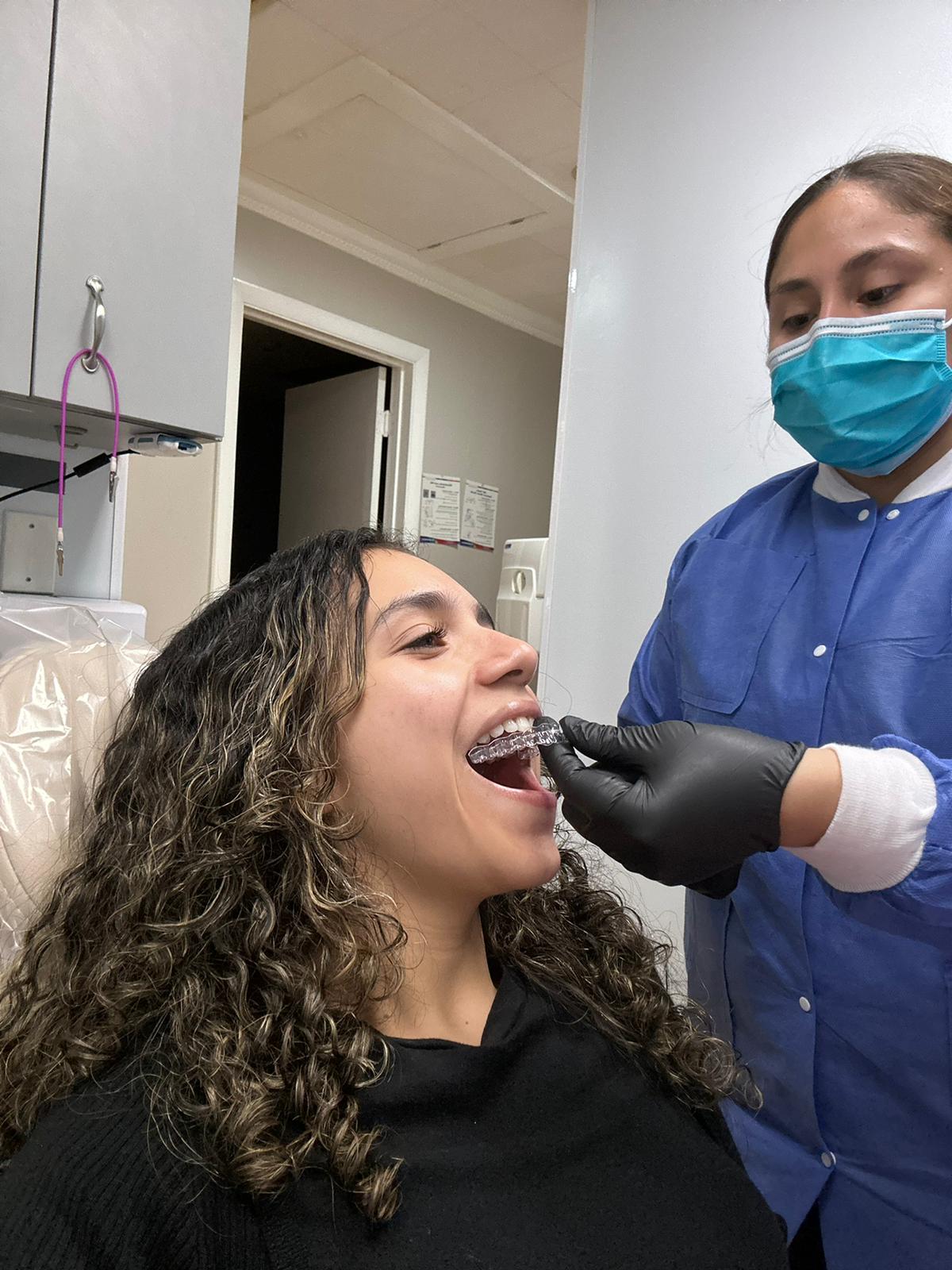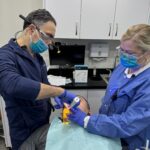
Dental braces are orthodontic devices that straighten and align teeth, correct bite issues, and improve oral health. They consist of various components that gradually move teeth into their desired positions. Braces are commonly used in orthodontic treatment to address crooked teeth, overcrowding, overbites, underbites, and crossbites. Getting dental braces is a common orthodontic treatment for correcting misaligned teeth and bite issues. While specific requirements can vary based on individual cases and orthodontic practices, there are some general considerations that orthodontists assess when determining if a person is a candidate for braces.
There are a few types of dental braces:
- Traditional Metal Braces: They are made of high-grade stainless steel. The most noticeable type of braces. Highly effective for various orthodontic issues.
- Ceramic Braces: Made of clear or tooth-colored materials. It’s less noticeable than metal braces. It may be preferred for aesthetic reasons.
- Lingual Braces: Placed on the teeth’ back (lingual) side. Virtually invisible from the front. It is customized for each patient.
- Invisible Aligners: Custom-made, clear plastic trays that fit over the teeth. Removable for eating and cleaning. Famous for adult orthodontic treatment.
Here are the usual requirements for getting dental braces:
- Orthodontic Evaluation: The process typically starts with an orthodontic evaluation. Orthodontists assess the alignment of teeth, the bite, and overall oral health.
- Age: While braces can be recommended for patients of various ages, there is often an optimal age range for treatment. Many people get braces during their teenage years, but adults can also benefit from orthodontic treatment.
- Type and Severity of Dental Issues: Braces may be recommended for crooked teeth, overcrowding, overbites, underbites, and crossbites.
- Overall Oral Health: Good oral health is essential before starting orthodontic treatment. Any issues, such as cavities or gum disease, must be addressed before braces are applied.
- Cavity-Free Teeth: Teeth should be free from active cavities. The presence of cavities may complicate the placement of braces and lead to additional oral health issues.
- Healthy Gums: Healthy gums are crucial for the success of orthodontic treatment. Periodontal (gum) health is typically assessed to ensure that the supporting structures of the teeth are in good condition.
- Adequate Bone Support: The jawbone needs to provide sufficient support for the movement of teeth. In some cases, additional orthodontic or dental procedures may be recommended to address bone-related issues.
- Compliance with Treatment Plan: Successful orthodontic treatment requires a commitment to the treatment plan. Patients need to be willing to follow the orthodontist’s instructions, attend regular appointments, and maintain good oral hygiene.
- Patient’s Motivation: The patient’s motivation and willingness to undergo orthodontic treatment are important factors. Compliance with oral hygiene practices and any additional instructions from the orthodontist is critical for successful outcomes.
- X-rays and Impressions: Orthodontists often use X-rays and impressions of the teeth to assess the current alignment and plan treatment.
It’s important to note that advancements in orthodontics have led to various types of braces, including traditional metal braces, ceramic braces, and invisible aligners like Invisalign. The specific kind of braces recommended may depend on factors such as the patient’s preferences and the severity of the orthodontic issues. For more information about teeth straightening, please call our office at (203) 945-0068 or contact us online.
Schedule your consultation with the best Inv Invisalign provider in Norwalk, CT!


